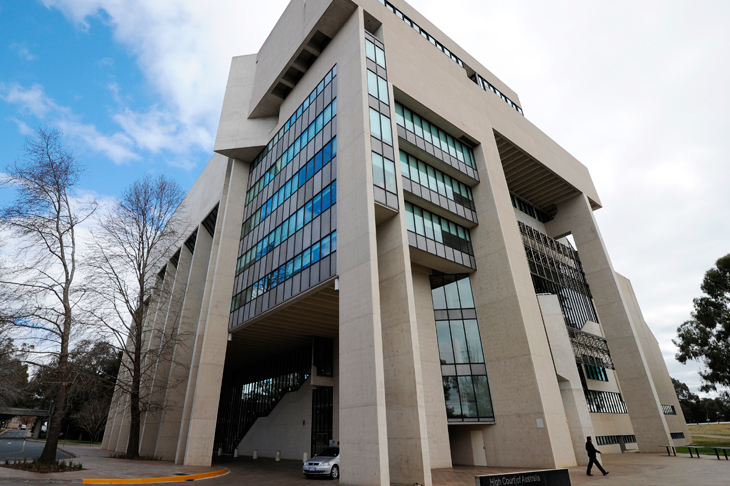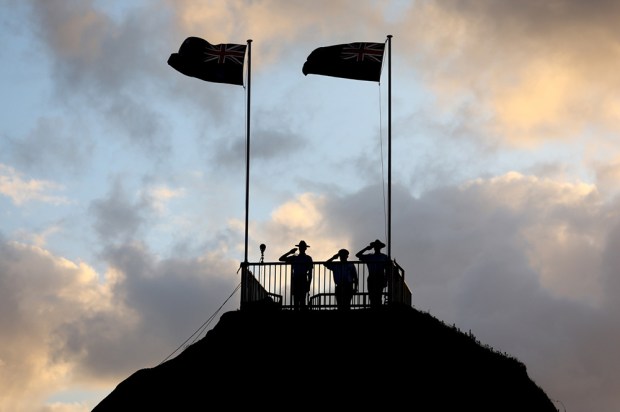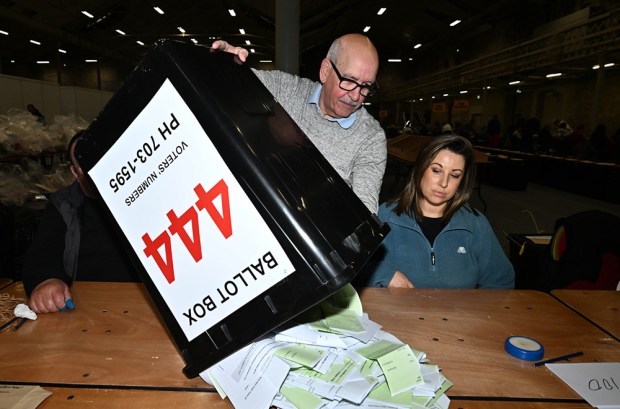President Donald Trump and congressional Democrats in the United States are about to engage in political warfare about who will be their next Supreme Court judge. Australians should be envious.
The American president fulfilled a key promise to conservative voters by nominating Neil Gorsuch to the court’s vacancy. Gorsuch is by reputable accounts an exceptionally qualified jurist, and an originalist in the mould of the late Antonin Scalia to boot. Regardless, Gorsuch will need to be confirmed by the US Senate to take a seat on the Supreme Court, meaning his qualifications, temperament and suitability for the office will be the subject of robust public debate.
This makes the American judicial appointment process more transparent, as it expects potential judges to make their views on the law known before occupying one of the most powerful positions in the country.
Compare this to Australian judicial appointments. The High Court is the last court of appeal in the Australian judiciary and has original jurisdiction to declare whether Commonwealth legislation is constitutionally valid. Yet the process is so opaque that it is unreasonably difficult to get an understanding of what sort of judge that appointee would be.
In case you missed it, this happened very recently. In November – with no fanfare – the federal government announced that the retiring Chief Justice Robert French would be replaced by Justice Susan Kiefel, whose position in turn would be filled by Federal Court Justice James Edelman. To even less fanfare, Kiefel and Edelman were officially sworn into their new roles in late January.
By the time the 42-year old Edelman reaches the mandatory retirement age, he will have sat on the court for nearly three decades. His CV is undoubtedly impressive, but his opinions on constitutional law are not widely known. This is not exceptional, but highlights something true of all High Court appointees: that while these judges wield significant power in the Australian political system, there is currently no expectation that a judge should explain how they would use that power.
What the American process gets right is that only at the time of appointment can a potential judge be scrutinised for their approach to statutory and constitutional interpretation. Unfortunately, the Coalition government since 2013 have been dismally risk-averse in their judicial appointments, preferring instead to appoint uncontroversial ‘orthodox’ judges who will maintain the status quo. This status quo is the decades of accumulated decisions stretching back nearly 100 years which have fundamentally transformed the federalist nature of the Constitution.
The essence of federalism is decentralised decision making. Where the laws and regulations that people need to observe are made by those who are most closely affected, the result is more representative law that is appropriately tailored to local circumstances. Different levels of law-making produces jurisdictional competition which can ultimately drive governments to make good choices: for instance, the reason that death isn’t a taxable event in Australia anymore is because the Bjelke-Petersen government in Queensland led the way in abolishing death taxes in the 1970s.
Sadly, competitive federalism has given way to co-operative federalism, where the states are pressured to enact identical laws where the Commonwealth has no power to simply write them itself. Failing this, the Commonwealth has often been very successful in writing the laws anyway and receiving the blessing of a deferential High Court.
Reversing this wouldn’t politicise the judiciary. In fact, the court has always been political, going back to the earliest days of Federation. In 1906, Prime Minister Alfred Deakin expanded the court from three judges to five. The two new appointments were progressive politicians H.B. Higgins and Isaac Isaacs, who immediately formed a radical minority and set about attacking the federal structure of the Constitution. This minority eventually became the majority, leading to the 1920 Engineers Case, where the concept of reserved state powers was swept aside. This was the beginning of a sharp decline of the federal integrity of the Constitution.
Landmark cases include the Uniform Tax Cases in 1942 and 1957 that confirmed the Commonwealth could prohibit the states from collecting their own income taxes, leading to Australia’s debilitating vertical fiscal imbalance. The Tasmanian Dams case in 1983 dramatically widened the Commonwealth’s external affairs power, enabling it to pass laws on any topic that was addressed in an international agreement. The WorkChoices case in 2006 had the effect of centralising industrial relations power to Canberra, paving the way for Labor to pass its destructive Fair Work Act in 2009.
Of course, the government shouldn’t appoint judges to secure particular policy outcomes. However, it is not unreasonable to expect judges to recognise that while the Constitution does enumerate certain heads of power to the Commonwealth, these shouldn’t be read so widely as to render the states as nothing more than mere underlings of the federal government.
Australian High Court jurisprudence is in a similar place to where the US was in the 1970s: loose constitutional interpretation has produced a body of law that is overly deferential to the central government. Things only improved in the US when the issue was taken seriously and its Senate – through a heavily scrutinised process – began appointing judges committed to interpreting the Constitution as it was originally intended. Now all appointments by Republican administrations are expected to be first and foremost legal conservatives, ensuring originalism is represented throughout the judiciary.
It can happen here too, but only if the unaccountable, secretive and insular appointments process is opened to scrutiny. The Right must form a strong counter-establishment in the legal community to challenge the status quo and promote federalists for judicial appointment. To make judges more accountable, any nominee put forward by the Attorney-General should appear before parliament to explain what kind of judge they will be before joining the High Court.
Only by democratising the Australian judicial appointment process can we hope to push back 100 years of judicial activism and centralisation of federal-state relations.
Got something to add? Join the discussion and comment below.
Get 10 issues for just $10
Subscribe to The Spectator Australia today for the next 10 magazine issues, plus full online access, for just $10.
You might disagree with half of it, but you’ll enjoy reading all of it. Try your first month for free, then just $2 a week for the remainder of your first year.














Comments
Don't miss out
Join the conversation with other Spectator Australia readers. Subscribe to leave a comment.
SUBSCRIBEAlready a subscriber? Log in